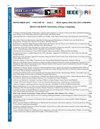基于时间天气的嵌入堆叠lstm短期住宅负荷预测
IF 1.3
4区 工程技术
Q3 COMPUTER SCIENCE, INFORMATION SYSTEMS
引用次数: 0
摘要
资源管理对于平衡人类需求与可持续性、防止过度使用以及为子孙后代保护水、森林和矿产等自然资源至关重要。从人类用电的根源上管理电力是至关重要的第一步,可以帮助我们更好地管理资源,减少对自然资源的压力。需要更好的预测方法来确定使用模式。准确的预测可以作为家庭能源管理系统(HEMS)机制优化电力运行、减少能源浪费和提高资源利用率的关键输入。人们正在开发基于神经网络的方法,通过学习一段时间内的行为模式来预测住宅建筑的用电量。这些方法利用历史数据来确定趋势并预测未来的消费,为更准确的预测方法提供了一个有希望的方向。尽管它们仍在不断发展,但它们为通过预测需求和实现更有效的资源分配来优化能源管理提供了基础。然而,这些方法主要依靠历史模式来预测未来的用电量,往往忽略了日常天气条件的影响。在本文中,我们探索了一种结合天气信息来增强用电量预测的方法。我们提出了一个简单的基于堆叠lstm的神经网络,它集成了历史使用数据和天气信息作为学习输入,以更有效地预测用电量。与不考虑天气因素和CNN-SLSTM模型的方法相比,我们的方法证明了更好的预测性能。对于BR04每小时测试数据集,我们提出的模型与天气和CNN-SLSTM模型的SLSTM相比,RMSE分别降低了56%和67%。本文章由计算机程序翻译,如有差异,请以英文原文为准。
Short Term Residential Load Forecasting Using Temporal Weather Based Embedding Stacked LSTMs
Resource management is crucial to balance human needs with sustainability, prevent overuse, and preserve natural resources like water, forests, and minerals for future generations. Managing electricity at the root of human usage can be a crucial first step, helping us move toward better resource management and reducing the strain on natural resources. Superior forecasting approaches are needed to determine usage patterns. Accurate predictions can serve as key input to the Home Energy Management Systems (HEMS) mechanisms in optimizing electricity operation, reducing energy waste, and increasing resource utilization. Neural network-based methods are being developed to forecast electricity usage in residential buildings by learning behavioral patterns over time. These approaches leverage historical data to identify trends and predict future consumption, offering a promising direction for more accurate forecasting methods. Although still evolving, they provide a foundation for optimizing energy management by anticipating demand and enabling more efficient resource allocation. However, these approaches primarily rely on historical patterns to predict future electricity usage, often overlooking the impact of daily weather conditions. In this paper, we explore a method that incorporates weather information to enhance electricity usage predictions. We propose a simple Stacked LSTM-based neural network that integrates historical usage data and weather information as learned inputs for more effective electricity usage prediction. Our approach demonstrates improved prediction performance compared to methods that do not account for weather factors and the CNN-SLSTM model. For the BR04 hourly test dataset, our proposed model achieves a 56% and 67% reduction in RMSE compared to the SLSTM with weather and CNN-SLSTM models, respectively.
求助全文
通过发布文献求助,成功后即可免费获取论文全文。
去求助
来源期刊

IEEE Latin America Transactions
COMPUTER SCIENCE, INFORMATION SYSTEMS-ENGINEERING, ELECTRICAL & ELECTRONIC
CiteScore
3.50
自引率
7.70%
发文量
192
审稿时长
3-8 weeks
期刊介绍:
IEEE Latin America Transactions (IEEE LATAM) is an interdisciplinary journal focused on the dissemination of original and quality research papers / review articles in Spanish and Portuguese of emerging topics in three main areas: Computing, Electric Energy and Electronics. Some of the sub-areas of the journal are, but not limited to: Automatic control, communications, instrumentation, artificial intelligence, power and industrial electronics, fault diagnosis and detection, transportation electrification, internet of things, electrical machines, circuits and systems, biomedicine and biomedical / haptic applications, secure communications, robotics, sensors and actuators, computer networks, smart grids, among others.
 求助内容:
求助内容: 应助结果提醒方式:
应助结果提醒方式:


